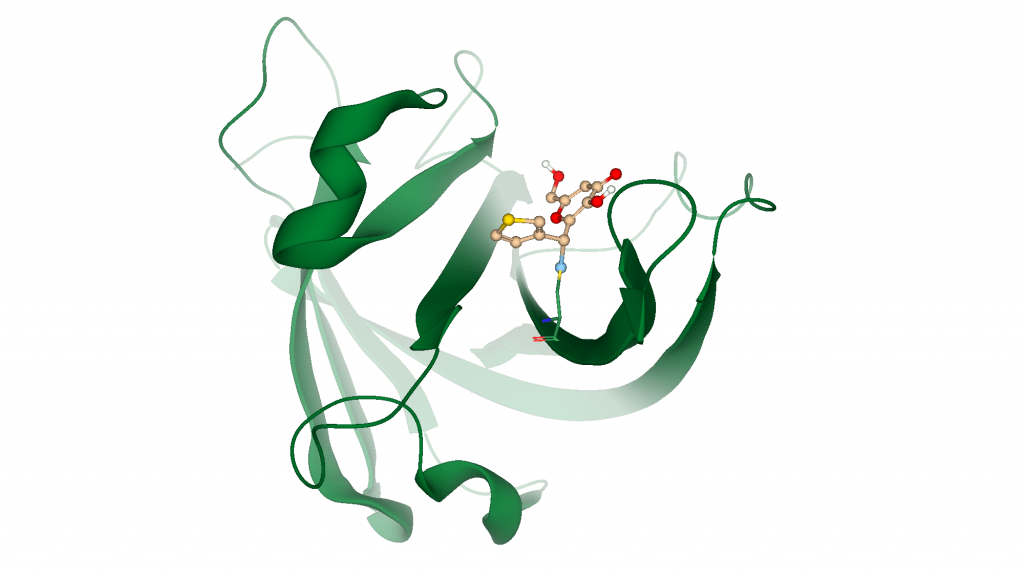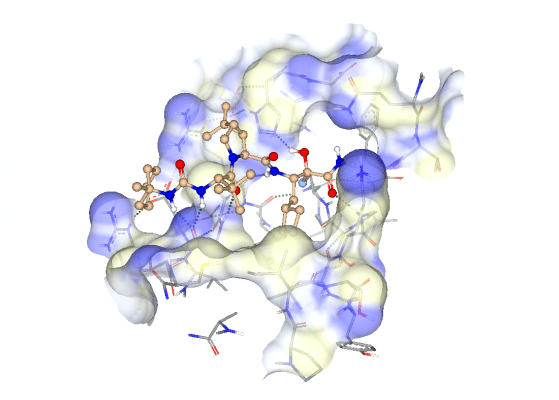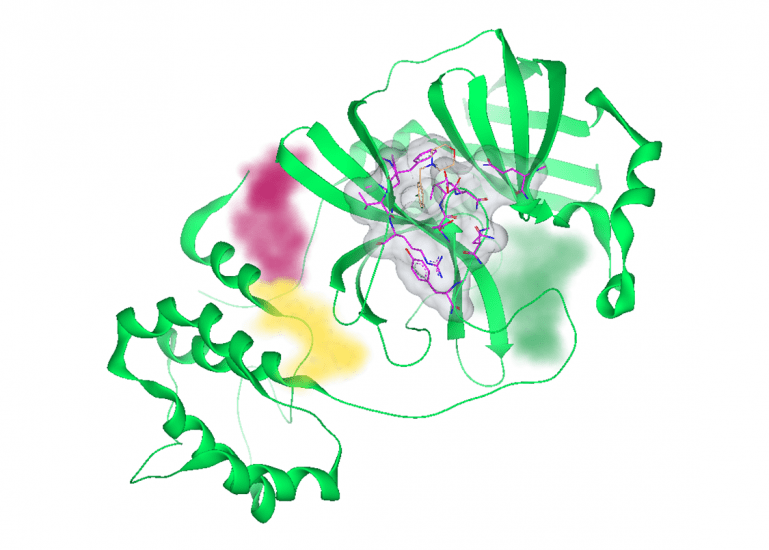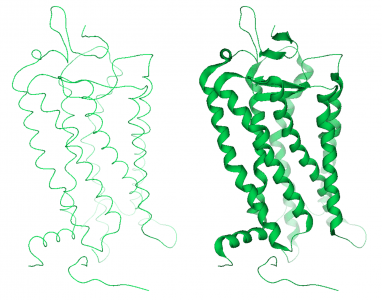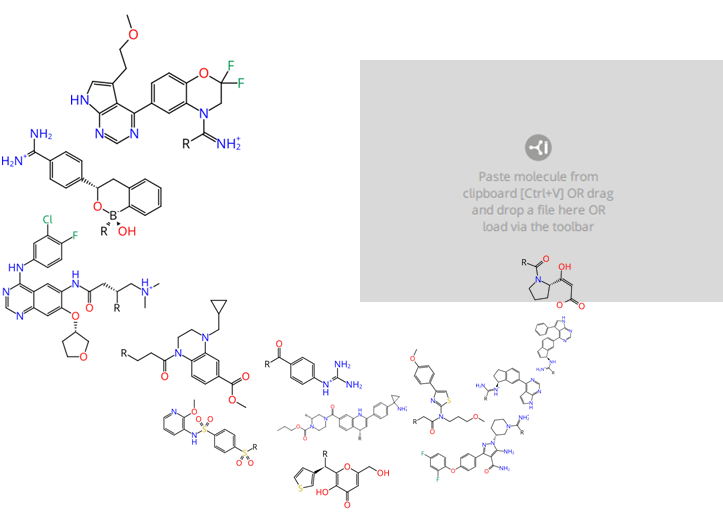SeeSAR now automatically computes and displays
secondary structural elements using the
DSSP algorithm from any PDB formatted file, irrespective of its origin, including homology models. Even users' own in-house structures, perhaps lacking such explicit information, will now be augmented with their secondary structural elements displayed as helices, sheets, and coils.
